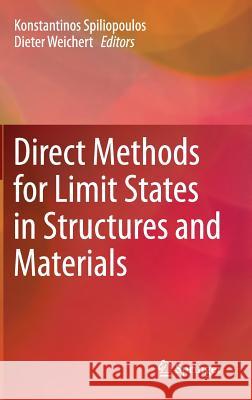Direct Methods for Limit States in Structures and Materials » książka
topmenu
Direct Methods for Limit States in Structures and Materials
ISBN-13: 9789400768260 / Angielski / Twarda / 2013 / 278 str.
Direct Methods for Limit States in Structures and Materials
ISBN-13: 9789400768260 / Angielski / Twarda / 2013 / 278 str.
cena 385,52 zł
(netto: 367,16 VAT: 5%)
Najniższa cena z 30 dni: 382,84 zł
(netto: 367,16 VAT: 5%)
Najniższa cena z 30 dni: 382,84 zł
Termin realizacji zamówienia:
ok. 20 dni roboczych.
ok. 20 dni roboczych.
Darmowa dostawa!
Direct Methods for Limit States in Structures and Materials











